Receding Gums
Gum recession is when the margin of gum tissue around teeth wears away. The reasons for receding gums can vary. Receding gums can cause small pockets to be created between your teeth and the gums. This space invites bacteria to build up; this can damage both your gums and your teeth.
The symptoms of receding gums can be difficult for a person to recognize in their own mouth. This is because receding gums happens very gradually. Gum recession is also inconsistent in the way it progresses, as some areas will recede more than others.

Get In Touch
01772 - 726932
407 Blackpool Road , Preston
Gum Recession Puts Your Teeth and Smile at Risk
A receding gum line exposes the delicate root surfaces, inviting bacterial and mechanical damage to the structures anchoring your teeth to the jawbone.
Regular Dental Visits
Keeping up with regular dental exams and cleanings is the best way to prevent gum disease. Regular visits are also the best way to assure that gum recession is quickly diagnosed. If left untreated, gum recession can lead to larger dental concerns
Why do Gums Recede?
The first question you may be asking if you think your gums are receding is, “Why is this happening?” There could be any number of reasons why your gums are receding; Gum disease – Natural recession – Smoking ? Diabetes? Wrong Toothbrushing Technique?
Genetics and Receding Gums
Genetics can also give you receding gums, so if your parents had this problem, you may as well. If your teeth are crooked and your bite is out of alignment, additional strain could be placed on some of your teeth. As a result of abnormal wear , your gums could begin to suffer and eventually recede.
Prevent Gum Recession
The best way to prevent gum recession is to visit our dental office for professional teeth cleaning twice per year. We can remove the plaque and tartar that has built up over time in order to give your teeth a fresh clean feel while also reducing the likelihood that plaque or tartar will build up. Additionally, you can begin to use a soft toothbrush and monitor how aggressively you brush your teeth.
Soft Tissue Grafting
Gum tissue grafting may sound scary, but it’s a standard procedure that we use to treat patients who suffer from different diseases that affect the soft tissue in the mouth.
Soft tissue grafting or gum tissue grafting is usually recommended for patients who have receding gums to protect the integrity of the roots. This surgery can also be used to improve the look of gummy smiles, where only a small part of the tooth crown shows.
Why are my gums receding on one tooth only?
While this could be related to the other causes such as genetics or wrong brushing technique, it is most likely to do some type of dental trauma. Perhaps this particular area of the mouth was cut or suffered a severe abrasion. Whether the injury was caused by eating something sharp, your nail scratched it, or an outside force cut you, gums can sometimes have difficulty healing and may recede as a result of that injury.
How is it treated?
Depending on how severe the gum recession is, there may be a treatment for your condition. Most cases of minor gum recession can be treated with proper oral hygiene—brushing and flossing regularly. However, if you think you’re experiencing gum recession, you should see a dental specialist. Possible treatment may include ultrasonic and manual tooth scaling or root planning that will remove plaque and tartar, preventing it from returning.


Symptoms of receding gums
In addition to less gum tissue around the teeth, receding gums often result in:
- bad breath
- swollen and red gums
- a bad taste in your mouth
- loose teeth
You may notice that your bite is different. You may also notice some pain or that your gums are especially tender. One of the major concerns with receding gums is that they become more susceptible to bacteria growth. This is why regular dental checkups and good and daily oral care is essential.
A dental hygienist or dentist can usually spot receding gums right away. If you look closely at all of your teeth, you may also notice the gum pulling away from the root of one or more teeth.
Gum recession tends to happen gradually. You may not notice a difference in your gums from one day to the next. If you see your dentist twice per year, they should be able to tell if there’s been a recession during that time.
Regrowing Gum Tissue
If prevention is no longer an option, you’re going to need to know how to regrow the lost gum tissue. Like we’ve said, bone tissue needs to be remineralized before your gums will start to repair themselves. And unfortunately, gum tissue won’t just return on its own without your help. Treatment options vary depending on how severe the gingival recession and whether you have signs of periodontal disease or not.
Two common options for regrowing gum tissue are gum grafting and the Pinhole Surgical Technique. The former involves removing tissue from another area in the mouth that is healthy and replacing some of the damaged gum tissue with it. In the latter, the gum tissue is manipulated over the exposed roots which will protect them and help prevent further recession

Types of Soft Tissue Grafts ;
There are several different types of gum grafts available if this is the treatment option that you need to pursue, and your periodontist will help you to choose the right option:
• Connective tissue grafts. This is the most common grafting procedure, and it takes tissue from the roof of your mouth before stitching it over the exposed root.
• Free gingival graft. Similar to the connective tissue grafts, this option involves taking tissue directly from the palate.
• Pedicle graft. This option uses tissue found next to the tooth that needs repair in order to perform the graft.
Are you concerned that your gums might be receding? Talk to our office about ways to treat the problem.
Personalized Gum Disease Treatment in Lancashire
Four out of five patients have some form of periodontal disease. Most of them don’t even realize they have it. It’s the number one cause of tooth loss in adults, but through periodontal, we’ll be able to restore the health of your teeth and gums.
Believe it or not, there are various gum disease treatments out there that focus on the prevention and restoration of gum tissue. Not only can these treatments improve functionality, but in the long-term, the health of your teeth can be extended with periodontal therapy by improving the overall quality of your smile. To us, a healthy smile is a self-assured smile.
Unfortunately, gum recession is an issue that many people suffer from, and it can lead to many different oral health issues, one that exposes tooth roots, has an unsightly ragged gum line and leads to eventual tooth loss or extensive recession or decay. While your confidence may be reduced if you suffered from a receding gum line, sensitivity is also a consequence of exposed roots. Not only that, but tooth loss and abuse to your dental structure overall can reduce the overall functionality of your oral health if you don’t do something about your receding gum line.
